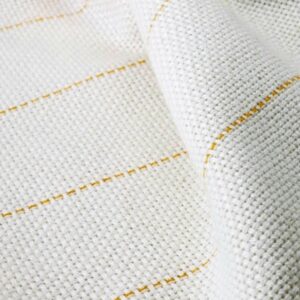How Does Nylon React with Wool? Knit
Introduction
Fabric compatibility is crucial in fashion and sewing, impacting the quality and longevity of garments. Understanding how nylon and wool interact can elevate your projects, whether you’re crafting clothing or home decor. This article explores the compatibility of these two fabrics, offering insights into their properties, benefits, challenges, and practical sewing tips.
Compatibility Analysis
Yes, nylon and wool can be successfully combined. These materials complement each other well, thanks to their distinct properties. Wool, a natural fiber, is known for its warmth and breathability, while nylon, a synthetic fiber, adds durability and elasticity.
Key Factors:
- Texture: Wool provides a soft, warm texture, whereas nylon adds smoothness.
- Weight: Wool is generally heavier, but combining with nylon can lighten the overall garment.
- Stretch: Nylon enhances the stretchiness of wool, offering better fit and comfort.
- Care Requirements: Wool requires gentle care, but nylon’s resilience can make maintenance easier.
- Durability: Nylon increases the wear resistance of woolen garments.
Fabric Properties Comparison Table
| Property | Wool (Natural) | Nylon (Synthetic) |
|---|---|---|
| Fiber Content | Natural protein fiber | Synthetic polymer |
| Weight and Thickness | Medium to heavy | Light to medium |
| Breathability | Highly breathable | Moderately breathable |
| Moisture-Wicking | Excellent | Good |
| Stretch and Elasticity | Limited natural stretch | High elasticity |
| Wrinkle Resistance | Moderate | High |
| Care Instructions | Hand wash, low temp, no bleach | Machine wash, low temp, no bleach |
| Durability and Wear | Good, but prone to pilling | Excellent, resists abrasion |
Benefits of Mixing These Fabrics
Combining nylon and wool offers numerous advantages:
- Enhanced Texture and Visual Interest: The contrast between nylon’s smoothness and wool’s warmth adds depth to designs.
- Improved Comfort and Performance: Nylon’s elasticity complements wool’s natural insulation, creating comfortable, high-performance garments.
- Better Drape and Movement: The blend ensures garments drape well and move with the body.
- Cost-Effectiveness: Nylon is generally cheaper than wool, making the blend more affordable.
- Seasonal Versatility: Suitable for various climates, from winter wear to transitional pieces.
- Design Possibilities: The combination allows for innovative designs in both fashion and home decor.
Potential Challenges
Mixing nylon and wool isn’t without its challenges:
- Different Shrinkage Rates: Wool may shrink more than nylon; pre-wash fabrics to minimize this.
- Conflicting Care Requirements: Wool’s delicate nature contrasts with nylon’s resilience; follow wool care guidelines.
- Texture Clash or Pilling: Pilling can occur; use fabric shavers to maintain appearance.
- Seam Puckering: Use appropriate sewing techniques to prevent puckering.
- Color Bleeding or Fading: Test for colorfastness before combining.
Practical Solutions:
- Use a gentle wash cycle and cool water.
- Opt for a wool-friendly detergent.
- Consider professional cleaning for delicate items.
Sewing & Styling Tips
- Sewing Techniques: Use a stretch stitch or zigzag stitch to accommodate nylon’s elasticity.
- Needle and Thread Recommendations: Use a ballpoint needle and polyester thread for best results.
- Interfacing and Stabilizer Needs: Lightweight interfacing works well without adding bulk.
- Seam Finishing Methods: Overlock or serge seams to prevent fraying.
- Pattern Selection Advice: Choose patterns that highlight the blend’s drape and texture.
- Styling Ideas: Mix and match for layered outfits or textured home accessories.
Care & Maintenance Guide
- Washing Instructions: Use cold water and a gentle cycle. Avoid bleach.
- Drying Recommendations: Lay flat to dry to maintain shape.
- Ironing and Steaming Tips: Use a low heat setting and steam sparingly.
- Stain Removal: Treat stains promptly with a wool-safe cleaner.
- Long-term Care: Store in a cool, dry place to prevent moth damage.
FAQ Section
-
Can you wash wool and nylon together?
Yes, but use a gentle cycle and cold water to protect wool fibers. -
Will wool shrink more than nylon?
Wool is more prone to shrinkage, so pre-wash and follow care instructions. -
What needle size should I use for sewing these fabrics together?
A ballpoint needle size 70/10 or 80/12 is recommended. -
Can you mix wool and nylon in one garment?
Absolutely, they complement each other well. -
How do you prevent pilling when combining these fabrics?
Use a fabric shaver and wash garments inside out. -
Is it okay to mix wool and nylon for upholstery?
Yes, the combination offers durability and aesthetic appeal. -
What’s the best way to finish seams with these fabrics?
Overlock or serge seams to prevent fraying.
By understanding the interplay between nylon and wool, you can create versatile and stylish pieces that stand the test of time. Whether you’re designing fashion garments or home decor items, this fabric pairing offers endless possibilities.

Leave a Reply